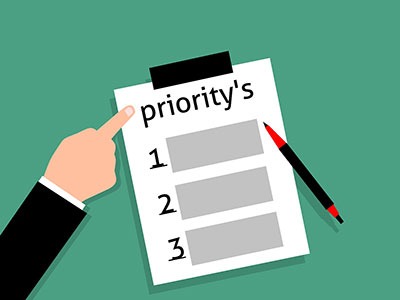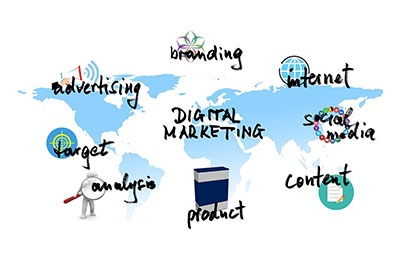The saying “content is king” still rings true even in the age of AI. As a WooCommerce store owner, you’re not just selling products; you should be crafting stories, sharing experiences, and building relationships with your customers through content. But how do you know if your content marketing efforts are paying off? How do you go about measuring the impact of your content marketing efforts on your WooCommerce business?
Setting Clear Goals and Objectives
The promise of engaging blogs, captivating social media posts, and compelling product descriptions is hard to resist. However, getting started on content marketing without a clear, strategic plan is akin to sailing without a compass. It might lead to some interesting places, but it’s unlikely to be the most efficient or effective route to your desired destination.
Starting with a Plan
A well-thought-out content marketing plan acts as a roadmap. It will help you direct your efforts toward specific business objectives. It ensures that every piece of content, whether a blog post, a social media update, or a promotional video, has a purpose and fits into a larger strategy to drive traffic, engagement, and ultimately, sales.
It’s Never Too Late for a Plan
If you’ve already embarked on your content marketing journey without a structured plan, worry not – it’s never too late to course-correct. The first step is to pause and reflect. This is where a content audit becomes invaluable. By reviewing your existing content, you can assess what’s working, identify areas of improvement, and understand how your current efforts align (or don’t align) with your business goals.
The Role of a Content Audit
A content audit involves a comprehensive review of all the content you’ve created – from blog posts and social media updates to product descriptions and email newsletters. This process helps you to:
- Understand the types of content that resonate most with your audience.
- Evaluate the SEO effectiveness of your existing content.
- Identify gaps in your content strategy.
- Determine the consistency and relevance of your messaging.
Through this audit, you can gather critical insights that will inform the creation of a well-defined content marketing plan.
Setting Goals with Purpose
Similarly, it’s important to set clear, measurable goals for your content marketing strategy. Start with applying the SMART framework to your content marketing goals:
- Specific – Your goals should be clear and specific, leaving no room for ambiguity. This specificity guides your efforts and helps focus your content marketing strategies. For a WooCommerce store, a specific goal might be, “Increase the number of product reviews on our site by 15% in the next quarter.” This goal is precise, directing your efforts towards a particular aspect of customer engagement.
- Measurable – A goal must be measurable to track progress and know when it has been achieved. For your WooCommerce store, this could involve setting quantifiable targets like website traffic, conversion rates, or social media engagement metrics. For instance, “Achieve a 10% increase in social media-driven sales over the next three months.” By quantifying your goals, you can assess the effectiveness of your content marketing strategies.
- Achievable – While ambition is important, your goals also need to be realistic and attainable. This doesn’t mean setting easy goals, but rather setting challenging yet possible goals. For a WooCommerce store, an achievable goal might be, “Launch a monthly blog series to boost SEO and increase organic search traffic by 25% within a year.” This goal is challenging but possible with consistent effort and quality content.
- Relevant – Your goals should be relevant to your business and its overall objectives. They should align with your broader marketing strategy and business plan. For example, if your WooCommerce store is focused on expanding its customer base, a relevant content marketing goal could be, “Create a targeted content campaign to attract 20% more first-time buyers in the next six months.” This aligns with the larger objective of customer expansion.
- Time-bound – Setting a deadline not only provides motivation but also a timeframe for you to focus your efforts. For example, “Increase email subscribers by 30% by the end of the fiscal year.” This timeframe helps you organize your content marketing activities and prioritize tasks.
Align these goals with your broader business objectives. For instance, if your WooCommerce store aims to increase organic traffic, set a specific goal like “Increase website visitors by 20% in 6 months.”
Goals Tailored for E-commerce
As an online retailer, your goals might include increasing sales, improving customer engagement, or boosting brand awareness. It’s important to differentiate between primary goals (like direct sales) and secondary goals (such as growing a mailing list), as they will guide your content strategy and measurement approach.
Key Performance Indicators (KPIs) for Content Marketing
Selecting the Right KPIs
Key Performance Indicators are the metrics that will help you track progress toward your goals. For a WooCommerce store, consider tracking KPIs related to website traffic, engagement metrics, conversion rates. and SEO performance.
Website Traffic
- Overall Traffic Analysis: Keep track of the total number of visitors to your site. This helps in understanding the reach of your content. A steady increase in traffic is a good indicator of effective content marketing.
- Traffic to Specific Content: Analyze the traffic directed to your blog posts or product descriptions. This gives insights into what content is driving interest and should be replicated or expanded upon.
- Source of Traffic: Identify whether the traffic is coming from organic searches, social media, referrals, or direct visits. This helps in understanding which channels are most effective for your content distribution.
Engagement Metrics
- Time Spent on Page: This metric indicates how engaging and relevant your content is to your audience. Higher time spent usually correlates with more engaging content.
- Bounce Rate: A high bounce rate might indicate that visitors are not finding what they expected or that the content is not engaging enough. Analyzing bounce rate can help in optimizing content for better engagement.
Conversion Rates
- Tracking Desired Actions: Measure how often visitors complete a specific action such as making a purchase, signing up for a newsletter, or downloading a resource. This is a direct measure of the effectiveness of your content in driving business goals.
- Conversion Paths: Understand the journey your customer takes from engaging with your content to completing a purchase. This can help optimize the sales funnel and identify key content contributing to conversions.
SEO Performance
- Keyword Rankings: Monitor where your content ranks for key terms related to your products or industry. High rankings can lead to more organic traffic.
- Organic Search Traffic: Track the number of visitors coming from search engines. An increase in organic traffic is a good indicator of effective SEO in your content.
Tools and Techniques for Tracking and Analysis
Google Analytics 4 is an invaluable tool for tracking website traffic and user behavior. Integrate it with your WooCommerce store to track sales conversions and customer pathways. If you need help setting up Google Analytics or any other analytics tools you might want to use, our team can help you get started.
Also, utilize social media analytics to understand your audience’s engagement with your content.
Qualitative Analysis
Don’t overlook qualitative data. Customer feedback, reviews, and surveys can provide insights into how your content resonates with your audience.
Using AI to Help Analyze Data
Artificial Intelligence (AI) can take your data analysis to the next level. AI tools can handle large data sets, uncover trends, and even predict customer behavior which can sometimes be difficult for humans to do manually.
AI Benefits for WooCommerce Owners
- Predictive Analysis: AI can forecast trends, helping you tailor your content strategy.
- Automated Reporting: Save time with AI-driven reports that highlight key metrics.
- Sentiment Analysis: Understand customer emotions and perceptions towards your brand.
Challenges and Considerations in Using AI
While AI offers advanced analytics capabilities, it’s important to approach it with an understanding of its limitations. AI tools require quality data to function effectively and can sometimes miss the nuances of human emotion and response that might be evident in direct customer feedback. Therefore, AI should be seen as a complement to, not a replacement for, human analysis.
Interpreting Data and Adjusting Strategies
Data-Driven Decisions
Now, it’s time to make sense of the numbers. Look for patterns and trends. Google Analytics 4 and data from your SEO software can help. Let the data dictate your decisions. For example, if product pages with video content consistently have higher conversion rates, consider adding more video content across your store.
Case Studies and Pivot Strategies
Learn from others in your industry. Case studies can provide inspiration and validation for your strategy adjustments.
Starbucks – Big Data and Customer Metrics
One example of this is Starbucks. The company utilizes big data and customer metrics, including real-time information to deliver more targeted service options. Using their mobile app and vast data stores display preferred orders to baristas before customers even get to the counter.
The North Face Using AI and Machine Learning
Another one is The North Face. They are a prominent clothing vendor that offers outdoor-friendly and activewear fashions. They utilize AI and machine learning – IBM Watson – to deliver a highly personalized customer experience via their mobile app.
Analyzing and Responding to Data Trends
As a WooCommerce store owner, your ability to quickly adapt based on data insights is critical. If the data shows that certain blog posts lead to higher engagement but not to sales, you might need to tweak your content to be more conversion-focused. Similarly, if certain products are consistently getting more views, consider highlighting them in your marketing efforts.
Long-Term Strategy and Continuous Improvement
Developing a Long-Term Content Strategy
Content marketing is not a one-time campaign; it’s a long-term strategy. Use the data you’ve gathered to develop a content roadmap. This might include diversifying your content types, exploring new topics, or investing more in high-performing channels.
Keep Learning and Adapting
The digital landscape is constantly changing, and so are the best practices in content marketing. Stay informed about trends, and be ready to experiment with new approaches. Attend webinars, participate in online forums, and network with other WooCommerce store owners to exchange insights and strategies.
Leveraging Customer Feedback for Improvement
Never underestimate the power of direct customer feedback. Encourage reviews, conduct surveys, and engage in social media conversations. This feedback can provide invaluable qualitative data that complements your quantitative analysis.
The Journey of Content Marketing Mastery
Measuring the impact of your content marketing efforts is a blend of art and science. It involves understanding numbers, interpreting trends, and maintaining a deep connection with your audience. As a WooCommerce store owner, your journey in content marketing is unique and evolving. Embrace the learning process, and let your insights guide you to new heights of success.












Leave a Reply